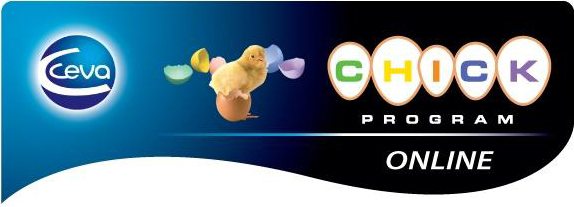 2017 Annual Report Website
2017 Annual Report Website

Online Bulletins

2010

January - Microbiological Tools for Quality Assurance in Hatchery: Sampling Procedures
Any sanitation program should be assessed routinely for checking its stable and continuous efficacy and, if necessary, its improvement. Indeed, the eggs and the day-old-chicks can be contaminated in the breeder house itself, during the egg holding procedures or in the hatchery itself. This routine monitoring should focus at least on air and surface sampling. The regular recording of the generated data will then allow a better follow up and diagnostic in case of troubleshooting. In case of any particular that needs to be solved, a deeper and more precise monitoring procedure can be applied, including egg washes, chick sampling and bacterial identification.

March - Microbiological Tools for Quality Assurance in Hatchery: Laboratory Methods
Most of the time, the monitoring analysis are focusing on bacteria (e.g. coliforms, Pseudomonas and Staphylococcus) and molds (including Aspergillus). Virus isolation and/or PCR are indeed much more complicated to implement routinely, and costly as well. And somehow, the bacterial and fungi presence by itself will assess the efficacy of the sanitation procedures applied. There are different kinds of procedure, depending upon the target to be sampled: air, flat surfaces, eggshell, liquids, fluff or chicks. And, according to the procedure, different material and media will be used for growing the germs monitored.

May - Serological Service in Poultry Industry
If we are to obtain full benefit from the money invested in disease monitoring, it is important to understand clearly what the results mean. This, in turn, depends on the theoretical basis of the test system (what it measures and what it does not measure) and the frequency of its application. Indeed, we must keep in mind that a serological response may confirm that the birds have been exposed to the organism, but it is not necessarily the cause. It must be applied fairly regularly during the period of growth or if disease breaks out. And another misconception could be to think that ”The more expensive the method used to evaluate infectious disease, the better it must be”. In fact the opposite is usually true, because the more expensive the test, the fewer samples tested. All test systems have their weaknesses.

July - Monitoring IBD Vaccination From Hatchery to Farm
Any good vaccine needs a proper administration to provide its full benefits. That’s why CEVA has always been at the spearhead of hatchery vaccination in the world, and much more than only in manufacturing vaccines, has found out new technologies to administer them in a convenient and trustable way. Moreover, the utilization of these machines and these vaccines needs to be checked regularly, implying a reliable control in the hatcheries. Any industrial production has its own Quality Control, and CEVA package is now providing the tool for this QC follow up of vaccination in hatcheries thanks to C.H.I.C.K. Program. This is a real tool for preventing vaccination failure and improving the vaccination technique itself.
Part of this program is indeed to explain in detail the monitoring to be done with specific SOP (Standard Operating Procedures): you will find hereafter some key points of its implementation in hatcheries, and then, how we can monitor further in the farms with the new available laboratory tools, the vaccine take of live vaccines like CEVAC® TRANSMUNE IBD.

September - Physiology, Endocrinology and Reproduction The Effects of Genetic Line (Broilers vs Layers) On Embryo Development
Recent decades were characterized by genetic selection of broiler and layer chickens for enhanced growth rate and meat yield or intensified egg production, respectively. It is to be expected that genetic selection for various traits would also influence embryo development and growth patterns that affect metabolism. The objective of the present study was to examine the effects of broiler (Cobb and Ross) and layer (Lohmann) lines and parent flock age (31 and 38 wk) on embryonic development, heart rate, O2 consumption, and blood parameters.
For each line, 2 incubation sets, from flocks aged 31 and 38 wk, with 500 eggs per set, were studied. Development patterns differed between layers and broilers: layers hatched 1 d later and their relative embryonic weight at hatch was significantly lower, probably because of their longer period until hatch, although yolk relative weights were similar. Oxygen consumption of layer embryos was lower than that of broilers, and plasma triiodothyronine concentration, hematocrit, and hemoglobin levels were lower in layers than in broilers. However, layer embryo heart rate was higher from embryonic d (E) 15 onward. Differenceswere found between the Ross and Cobb lines in embryonic development. Oxygen consumption of Ross embryos was slightly higher than that of Cobb from E16 to E19. Heart rate of Ross embryos was significantly higher than that of Cobb. Furthermore, plasma triiodothyronine concentration of Ross embryos was significantly higher on E14, E16, and hatch.
These differences suggest that the genetic selection for rapid growth rate in the 2 broiler lines did not cause differences between their embryonic growth patterns, but it did affect their metabolic rate. Oxygen consumption was higher in embryos from the 38-wk-old flock. The results suggest that genetic selection affected not only production traits but also the developmental pattern of the embryo and its metabolic characteristics.
GENERAL REMINDER: Product indications, usage instructions & withdrawal periods may vary by Country. Always follow label instructions and consult your veteriarian or poultry health adviser. |
|
This page contains information on veterinary pharmaceutical and biological products that are sold in several different countries and areas where they may be marketed under different trade names and pursuant to different regulatory approvals. Accordingly, ThePoultrySite and CEVA SANTE ANIMALE give no guarantee that the details presented are correct with respect to all locations.
|







